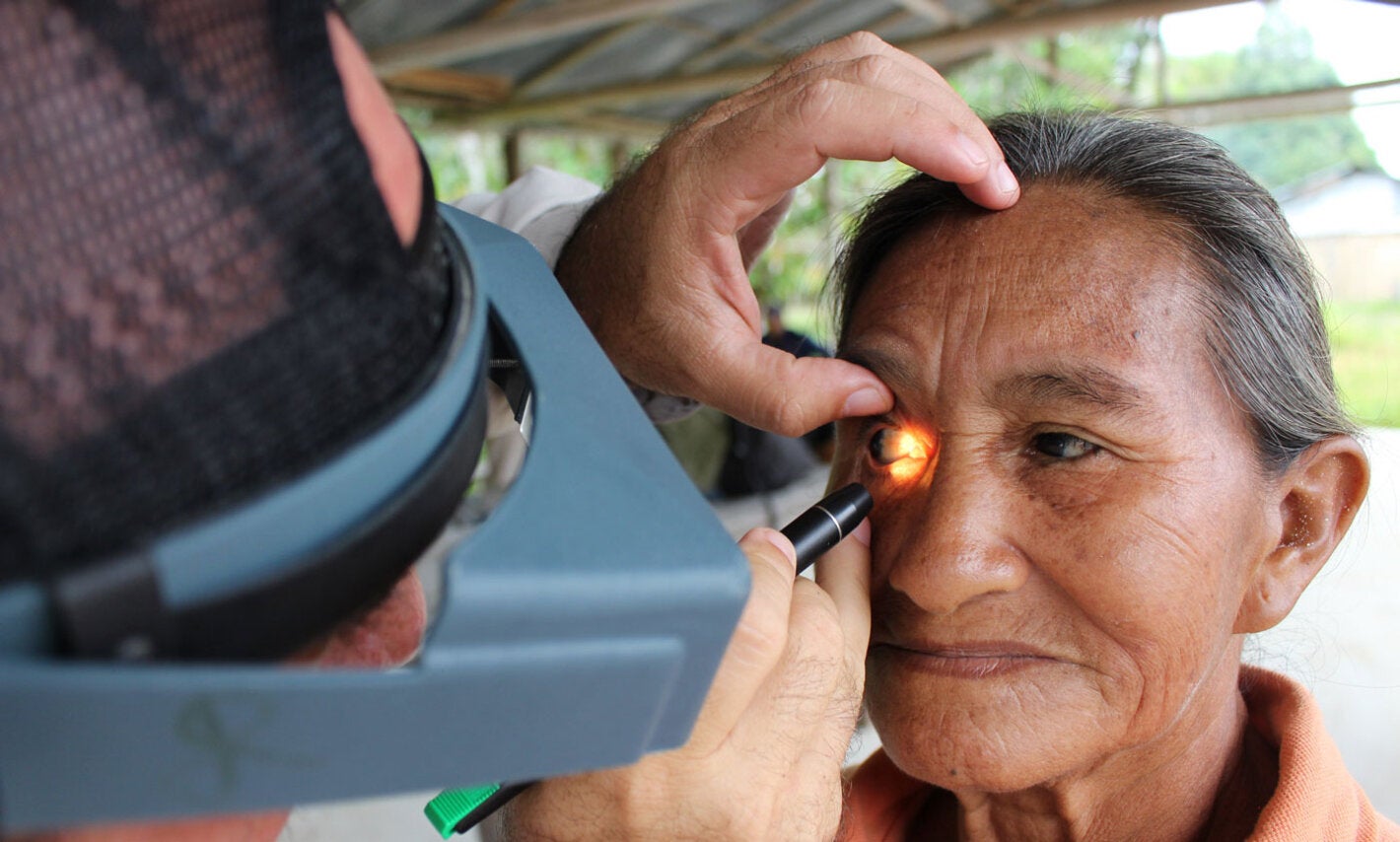
Washington, DC, 22 September 2023, PAHO/WHO – The Pan American Health Organization (PAHO) and the Government of Canada have launched an initiative to eliminate trachoma, an infectious eye disease and leading cause of blindness among women in poor, remote areas of Latin America.
Through a C$ 15 million (US$ 11.2 million) contribution provided by Global Affairs Canada (GAC), PAHO will expand technical cooperation in 10 Latin American and Caribbean countries to strengthen surveillance and expand treatment for the disease. The aim is to reach around 10 million people over the next 5 years.
The collaboration was announced by Canadian Prime Minister Justin Trudeau during the United Nations General Assembly (UNGA) in New York, as part of the country’s efforts to support progress on the 2030 Sustainable Development Agenda.
“We thank the Government of Canada for this contribution, which will help prevent visual impairment and blindness due to trachoma in the Americas,” the Director of PAHO, Jarbas Barbosa, said. “This initiative will further advance our goal to eliminate preventable diseases that disproportionally affect the poor and populations in situation of vulnerability, such as trachoma, from our region by 2030.”
Caused by the bacteria Chlamydia trachomatis, trachoma is transmitted by flies as well as through direct contact with the eye secretions of infected people. The disease primarily affects those living in extreme poverty. Factors that drive transmission include overcrowding, and poor hygiene and sanitary conditions.
Trachoma is endemic in many rural, poor, and remote areas of the world, including Brazil, Colombia, Guatemala, and Peru, where it affects almost 5.6 million people. In Latin America, Indigenous populations in the Amazon basin are disproportionately affected.
It is estimated that women are twice as likely to be affected by the disease and are up to four times more likely than men to be blinded by trachoma. This is due to a combination of factors, including traditional gender-based caring roles in endemic communities, lack of education, and limited access to basic health services.
The PAHO-Canada collaboration will target at-risk populations in Brazil, Colombia, Guatemala, and Peru and accelerate the implementation of the WHO/PAHO integrated package of interventions for trachoma, called SAFE. This includes surgery to prevent visual impairment and eventual blindness, antibiotics to reduce infection, facial cleanliness to prevent infection, and environmental improvement to reduce transmission.
In a bid to advance elimination of the disease in the region, Bolivia, Ecuador, El Salvador, Haiti, and Venezuela will also receive support to strengthen surveillance to determine if trachoma is a public health problem among populations living in vulnerable conditions in those countries. Mexico, which became the first country in Latin America to eliminate trachoma as a public health problem in 2017, will be supported in the implementation of surveillance actions to prevent reemergence of the disease.
Neglected infectious diseases are a diverse group of 20 parasitic, bacterial, and fungal diseases, including trachoma, that have a disproportionate health impact on marginalized populations, including ethnic minorities. Risk factors include poverty, income inequality, lack of access to safe drinking water and proper sanitation and barriers to education and health services, among others.
PAHO supports countries in the Americas to accelerate efforts towards eliminating these diseases through integrated approaches focusing on increasing access to health services, improving health information and surveillance systems, tackling social and environmental determinants of health, and reinforcing governance and stewardship to leave no one behind. PAHO´s Disease Elimination Initiative is a major drive to support countries in wiping out 30 communicable diseases such as trachoma in the Americas by 2030.



